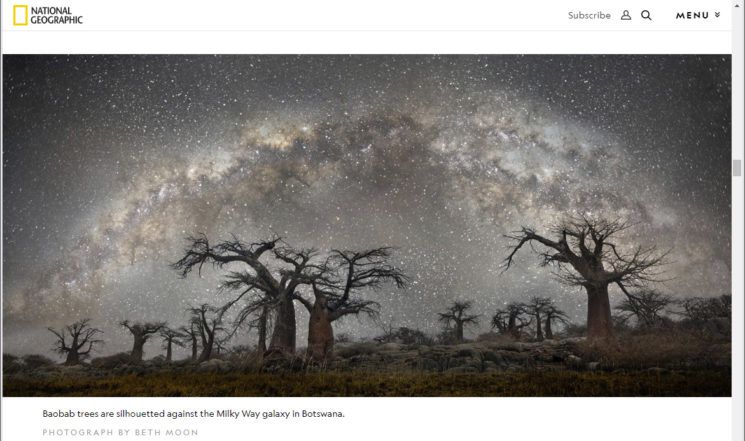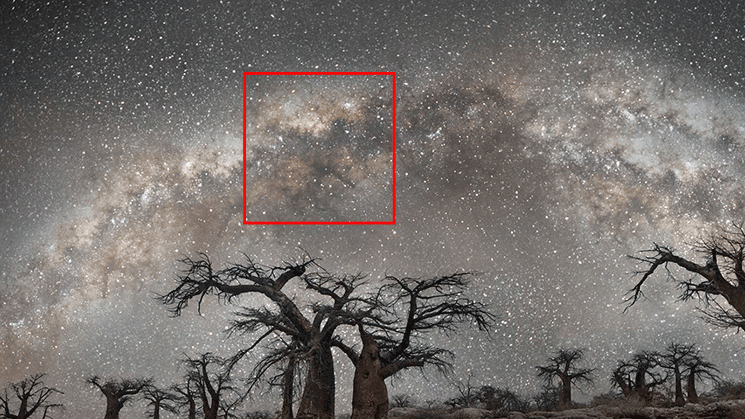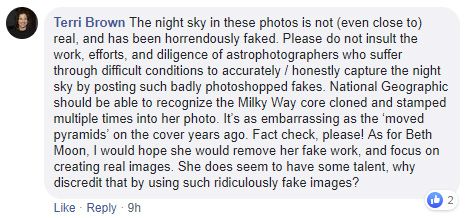Astrophotographers have called out National Geographic for publishing ‘doctored and composite’ night sky photos, that are at odds with the media company’s strict code of ethics.

National Geographic published an online article in late April on Ancient Skies, Ancient Trees – a photo series and book by successful US fine art photographer, Beth Moon.
The article explains that Moon photographed the world’s oldest trees with a night sky as a backdrop.
‘Her mission was simple: Find out where the world’s darkest places overlap with the world’s oldest trees, go there, and make beautiful photographs.
Execution of this plan, of course, was not quite as simple
First of all, Moon says, lots of places have either old trees or dark skies, but not both. When the two do intersect, the location is often challenging to reach.’
To the untrained eye, the photos show exactly what they describe. But astrophotographers and stargazers saw a scrambled and tampered with night sky, or Northern Hemisphere star orientation in South Hemisphere locations.
One image shows what many claim is a patch of stars cloned several times.
‘At National Geographic it’s never OK to alter a photo. We’ve made it part of our mission to ensure our photos are real,’ wrote National Geographic editor in chief, Susan Goldberg, in 2016.
Goldberg says National Geographic requires all photographers on assignment to submit “raw” files of their images.
It’s likely that ‘image quality control’ vastly differs from the printed magazine to online content, and it’s doubtful that all photos published online are checked and scrutinised. Also, Moon wasn’t on assignment.
But astrophotographers feel hard done by.
Adrien Mauduit, an astrophotographer and science communicator, says he spotted four images that are composites.
He says there’s no issues with Moon’s photos. She’s entitled to do as she pleases with her art. But National Geographic presents the photos as real captures and not ‘illustrations’ or art.
The article is filed under science, and informs the reader the night sky was captured on location by a 30-second exposure.
Mauduit is not alone, with other astrophotographers frustrated that composite night sky art photos receive the valuable publicity. The sentiment is similar to that of prominent Australian landscape photographer, Ken Duncan, who wants to distinguish between ‘real’ landscape photos, and ‘photo illustrations.
If the images are composites as some experts say, it’s surprising Moon, a renowned photographer, didn’t think eagle-eyed online readers would pick it up.





She cannot tell a Sweet Chestnut from an English Oak either.